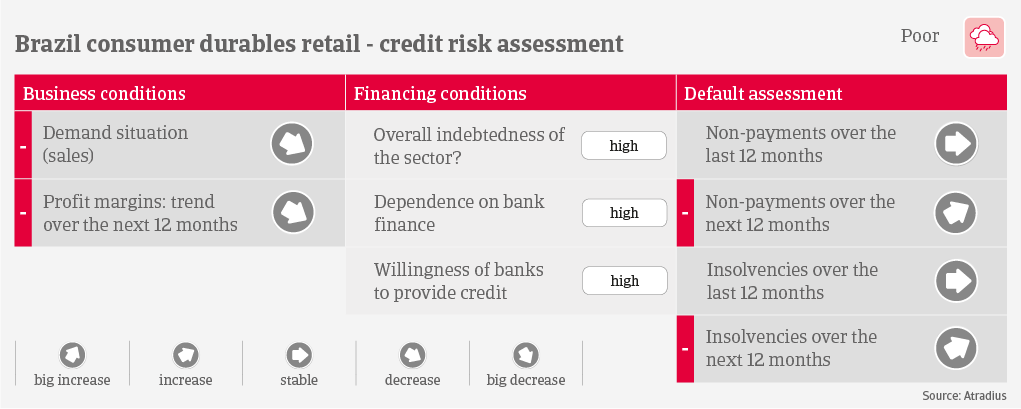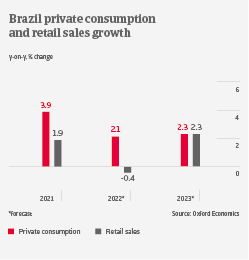High inflation and lower consumer confidence weigh on sales

Brazil´s economic rebound from the deep contraction caused by the pandemic has lost steam. Retail sales contracted year-on-year in H2 of 2021, and remained subdued in early 2022, due to high inflation, elevated interest rates and persistently high unemployment. Despite several benchmark interest rate hikes since H2 of 2021 (to 11.75% in March 2022), we expect annual inflation to increase to 10% in 2022. This weighs on the consumer durables sector, as confidence remains subdued amid more expensive consumer credits and sharply increased food and fuel prices.
After a 1.9% increase in 2021, we expect retail sales to contract by 0.4% this year, with domestic appliances value added decreasing by about 4%. However, online sales will continue to grow, by about 12% in 2022, after increases of 27% in 2021 and 41% in 2020. Online competition particularly affects brick-and-mortar retailers of consumer electronics and small household appliances.

Most consumer durables retailers are highly dependent on bank financing, and access to loans is still good. While profit margins are generally low, those of furniture retailers are usually higher in comparison with their peers in the household appliances and consumer electronics segments. After rising profit margins across all subsectors in 2021, we expect a deterioration in 2022, due to the subdued economic environment and sales outlook. Retailers try to pass on price increases imposed by consumer durables producers, but higher end-prices hamper sales, as household purchasing power has decreased. Additionally, high transport costs affect producers and retailers alike. Several retailers also struggle with high inventories.
Payment duration in the sector is 90 days on average, and payment behaviour has been good during the past two years. However, we expect payment delays to increase in the coming twelve months. The insolvency level in the consumer durables retail sector has been low last year, but we expect an increase of about 5% in 2022, mainly affecting smaller brick-and-mortar retailers. Due to higher credit risk and subdued sales outlook, our underwriting stance varies between neutral and restrictive across subsectors, dependent on individual businesses´ financial situation and sales performance.

